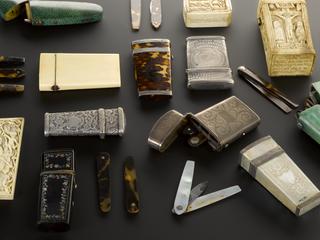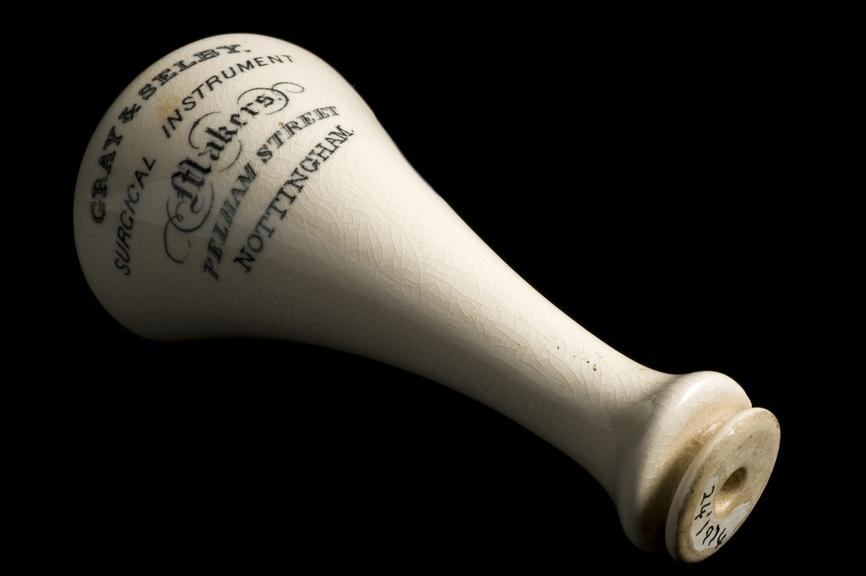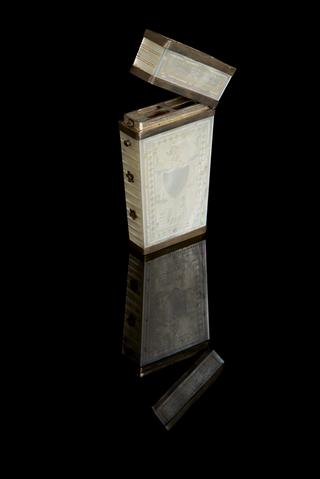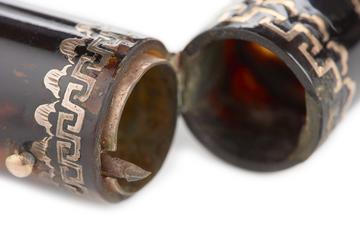
Aitken type stem pessary, Nottingham, England, 1801-1900
- Made:
- 1801-1900

Aitken's stem pessary, creamware, by Gray and Selby of Nottingham, Nottinghamshire, England, 1801-1900
Vaginal pessaries supported a prolapsed uterus. This is where the uterus slips down from its usual position. Vaginal pessaries also alter what was otherwise considered an abnormal uterine position. Their use became widespread in the 1800s.
Hugh Lenox Hodge (1796-1873) was the American inventor of a pessary that is used today. He considered that by using pessaries, ‘the intellectual and spiritual being’ might be elevated from the ‘lowest states of depression’. This creamware example was made in England by instrument maker Gray and Selby of Nottingham.
Details
- Category:
- Therapeutics
- Collection:
- Sir Henry Wellcome's Museum Collection
- Object Number:
- A612167
- Materials:
- creamware (glazed)
- Measurements:
-
overall: 75 mm x 48 mm x 35 mm, .04kg
- type:
- pessary
- credit:
- Bedford, D.J.



